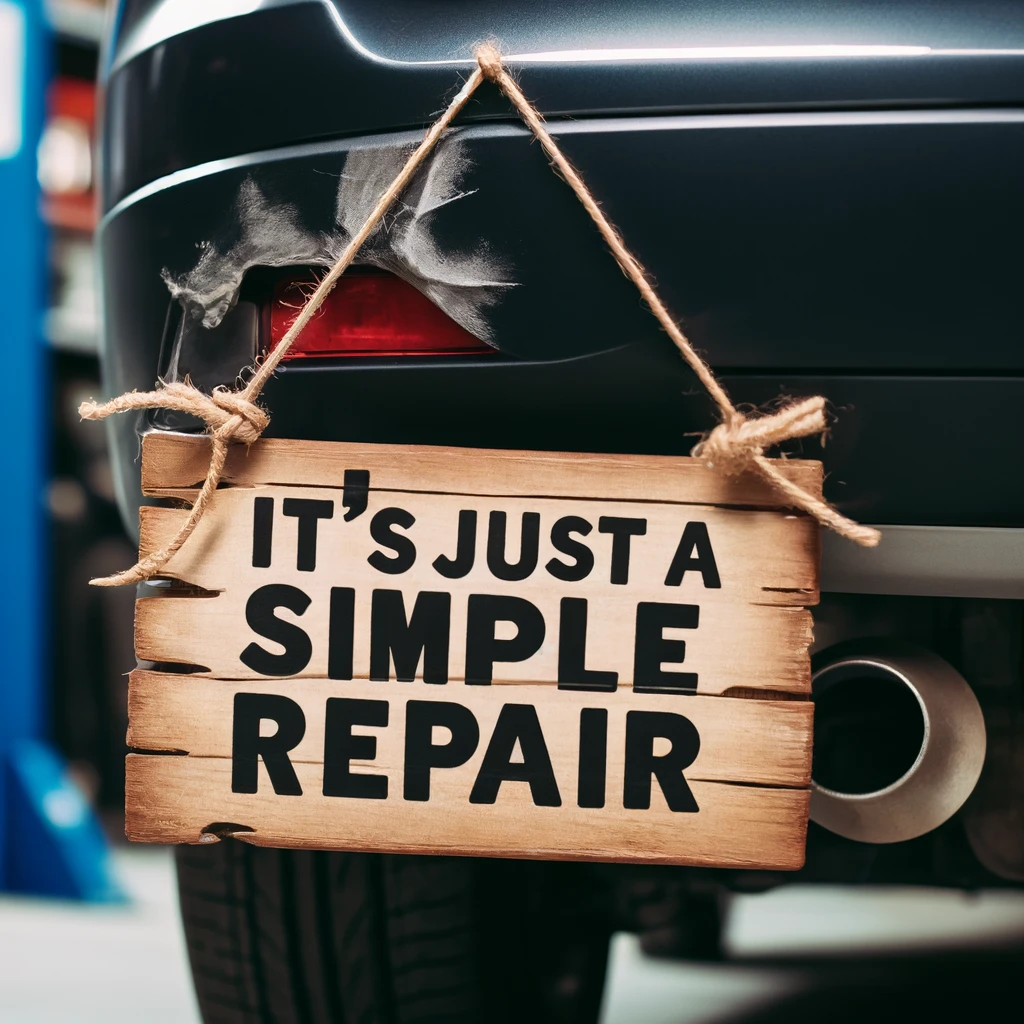Digital Automotive Services
-

- Call Us:
- 952-884-7702

Have you ever heard someone say, “It’s just a bumper job?” What used to be an easy, quick repair now may require calibration. And maybe even more than just one. In an era dominated by advanced driver assistance systems (ADAS), where 70-80% of the 60 million vehicles on US roads come equipped with such technology, the seemingly simple “Just a bumper job” likely holds more complexity than you might think.
For example, let’s use a 2022 Toyota Camry, one of the world’s best-selling cars, to illustrate this in several ways. First, imagine the problem was simple, such as a scratched front bumper. Then note that a Toyota features a front millimeter wave radar mounted in the front bumper/grille, necessitating its removal for repair and painting.
The Toyota Service Information states, “When the front bumper is damaged or deformed due to an accident or contact with other objects, etc., or the bumper installation area on the body is repaired, it is necessary to perform millimeter wave radar sensor adjustment.” See screenshot below:

This vehicle may also come equipped with the Panoramic View Monitor System, which, according to the Toyota SI chart, requires adjustment or, in other words, calibration.
Next, imagine the rear bumper sustaining damage from a minor collision on the corner. It doesn’t look like substantial damage, just a tiny scratch and some cracked paint. No big deal, right? Think again. When the bumper sustained damage, it got pushed in, made contact with the Blind Spot Monitoring sensor/module (BSM), and bent the bracket. The bumper popped back out, and it just looks like there is paint damage. But now, you must perform a calibration with the bumper removed to ensure proper aiming of the BSM, and you may need to adjust the mounting bracket. If this vehicle has parking aid sensors, you may need to perform a sensor registration process similar to a calibration.
These examples underscore the transformation of seemingly simple repairs into complex procedures demanding time and expertise. Each adjustment and calibration represents a crucial step toward restoring the vehicle’s safety and functionality to pre-accident levels.
Conclusion:
In today’s automotive landscape, you should not dismiss any repair as “just” anything. The era of straightforward fixes has yielded to a realm of nuanced calibrations and adjustments—a testament to the evolving complexity of modern vehicles. So, next time you hear, “It’s just a bumper job,” remember that even easy jobs need calibration.
Smart Express:
With a reputation for excellence, Smart Express leads the industry in providing comprehensive ADAS calibration and repair solutions. Whether addressing minor adjustments or complex recalibrations, Smart Express prioritizes accuracy and reliability, setting the standard for ADAS repair services. (Smart Express only uses OEM software to reinstate ADAS systems.) Trusted by customers and industry professionals, Smart Express continues innovating and is committed to enhancing road safety through meticulous ADAS repair solutions.
Site Locations
Products & Services
Network Repair Shop
- Copyright © 2025 smartexpress.com
- All rights reserved

